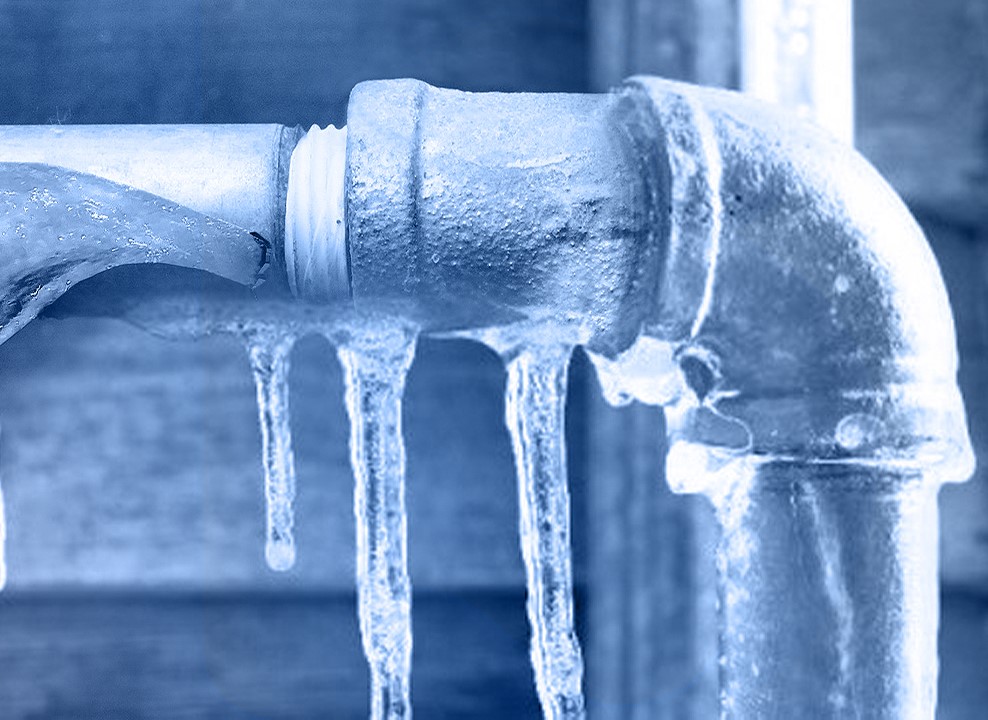How to Defend Plumbing System from Cold Weather: Critical Strategies
How to Defend Plumbing System from Cold Weather: Critical Strategies
Blog Article
We've uncovered this post relating to How to Prevent Your Pipes From Freezing below on the internet and figured it made perfect sense to write about it with you on my blog.

Cold weather can damage your plumbing, particularly by freezing pipes. Here's just how to avoid it from happening and what to do if it does.
Intro
As temperatures decrease, the threat of frozen pipes boosts, possibly bring about pricey fixings and water damage. Understanding just how to prevent frozen pipelines is critical for home owners in cold environments.
Recognizing Frozen Pipelines
What triggers pipelines to freeze?
Pipes freeze when exposed to temperatures listed below 32 ° F (0 ° C) for prolonged durations. As water inside the pipelines freezes, it increases, putting pressure on the pipeline wall surfaces and potentially triggering them to rupture.
Risks and problems
Icy pipelines can lead to water supply disruptions, home damages, and expensive fixings. Burst pipes can flooding homes and create substantial architectural damage.
Signs of Frozen Pipeline
Identifying icy pipelines early can prevent them from breaking.
Exactly how to identify icy pipes
Seek reduced water flow from taps, uncommon odors or sounds from pipes, and noticeable frost on subjected pipes.
Avoidance Tips
Insulating prone pipelines
Wrap pipelines in insulation sleeves or use heat tape to safeguard them from freezing temperature levels. Focus on pipes in unheated or external locations of the home.
Home heating strategies
Maintain indoor areas adequately warmed, especially areas with pipes. Open cupboard doors to allow cozy air to distribute around pipelines under sinks.
Protecting Outside Pipes
Yard hoses and outdoor taps
Separate and drain yard hose pipes prior to winter season. Set up frost-proof faucets or cover exterior faucets with shielded caps.
What to Do If Your Pipelines Freeze
Immediate activities to take
If you think icy pipes, maintain taps available to relieve pressure as the ice melts. Utilize a hairdryer or towels soaked in warm water to thaw pipelines slowly.
Long-Term Solutions
Architectural adjustments
Consider rerouting pipelines far from exterior walls or unheated locations. Add extra insulation to attics, cellars, and crawl spaces.
Updating insulation
Buy high-quality insulation for pipes, attics, and wall surfaces. Appropriate insulation assists keep consistent temperature levels and minimizes the risk of frozen pipes.
Conclusion
Protecting against frozen pipes calls for positive actions and fast reactions. By recognizing the reasons, indications, and safety nets, home owners can protect their plumbing throughout winter.
6 Proven Ways to Prevent Frozen Pipes and Protect Your Home
Disconnect and Drain Garden Hoses
Before winter arrives, start by disconnecting your garden hoses and draining any remaining water. Close the shut-off valves that supply outdoor hose bibs and leave the outdoor faucet open to allow any residual water to drain. For extra protection, consider using faucet covers throughout the colder months. It’s also important to drain water from any sprinkler supply lines following the manufacturer’s directions.
Insulate Exposed Pipes
Insulating your pipes is an effective way to prevent freezing. Pipe insulation is readily available at home improvement stores and is relatively inexpensive. Pay close attention to pipes in unheated areas such as the attic, basement, crawl spaces, or garage. Apply foam insulation generously to create a buffer against the cold. You can also wrap your pipes in heat tape or thermostat-controlled heat cables for added warmth.
Seal Air Leaks
Inspect your home for any cracks or openings that could let in cold air. Seal any holes around the piping in interior or exterior walls, as well as the sill plates where your home rests on its foundation. Additionally, make sure to keep your garage door closed unless you’re entering or exiting. Leaving it open creates a significant air leak that can lead to frozen pipes.
Allow Warm Air Circulation
During cold snaps, it’s essential to allow warm air to circulate evenly throughout your home. Leave interior doors ajar to promote better airflow. Open kitchen and bathroom cabinets to help distribute heat consistently around the rooms. If you have small children or pets, be sure to remove any household chemicals or potentially harmful cleaners from open cabinets for safety.
Let Faucets Drip
A small trickle of water can make a big difference in preventing ice formation inside your pipes. When temperatures drop significantly, start a drip of water from all faucets served by exposed pipes. This continuous flow helps prevent the water from freezing. Additionally, running a few faucets slightly can relieve pressure inside the pipes, reducing the chances of a rupture if the water inside does freeze.
https://choateshvac.com/6-proven-ways-to-prevent-frozen-pipes-and-protect-your-home/

Hopefully you liked our post about How to prepare your home plumbing for winter weather. Thanks a ton for spending some time to browse our article post. Don't hesitate to set aside a second to share this content if you enjoyed reading it. Thank-you for going through it.
Information Here Report this page